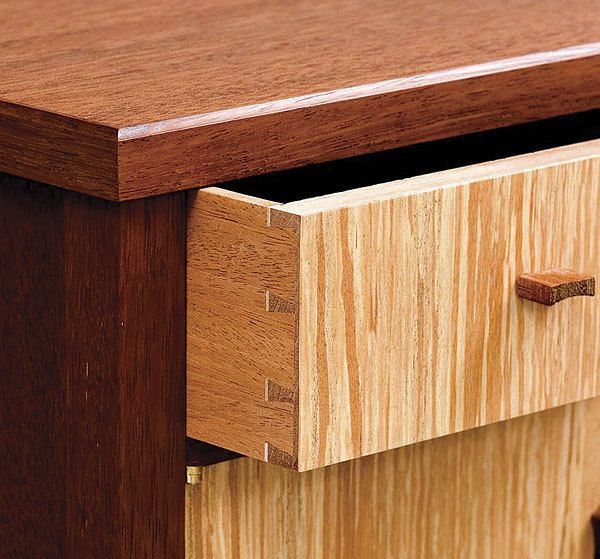
Q:
I’d like to use 1/16-in.-thick shopsawn veneer on a solid-wood drawer front. Will I have any problems if I lay the veneer perpendicular to the substrate?
Nick Brygidyr, Montreal, None
A:
Vertical grain on drawer fronts can give a flattering effect to furniture, and it shouldn’t create any problems as long as you keep the veneers between 1⁄16-in. and 3⁄32-in. thick. Anything thinner will be less durable and more difficult to work with hand tools. Anything thicker would react too strongly to seasonal changes in humidity.
Remember to veneer both drawer faces with equal thicknesses of the same wood to balance any twisting or warping caused by the glue curing. If you can, use veneers with similar grain orientation. Using a flatsawn veneer on one face and a quartersawn veneer on the other, for instance, will create a panel that is more likely to distort. For a substrate, I’d pick a wood that won’t react wildly to changes in humidity, preferably one with quartersawn grain and color similar to the veneers. You can attach the veneers with white or yellow PVA glue, but I prefer the longer setup time that white glue affords.
When making curved drawers that are laminated, first glue together the plies of the substrate before applying the veneers. If the curve is severe, the plies stiff, and the arc of the curve critical, use urea-formaldehyde glue for both the laminates and veneer. Its stiffness will minimize creep and springback.
Drawings by Kelly J. Dunton
Fine Woodworking Recommended Products

Festool DF 500 Q-Set Domino Joiner

Bessey K-Body Parallel-Jaw Clamp
























Comments
Interesting discussion. Makes the dovetails look a little strange.
Log in or create an account to post a comment.
Sign up Log in